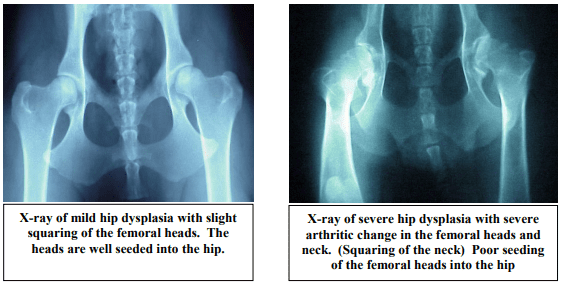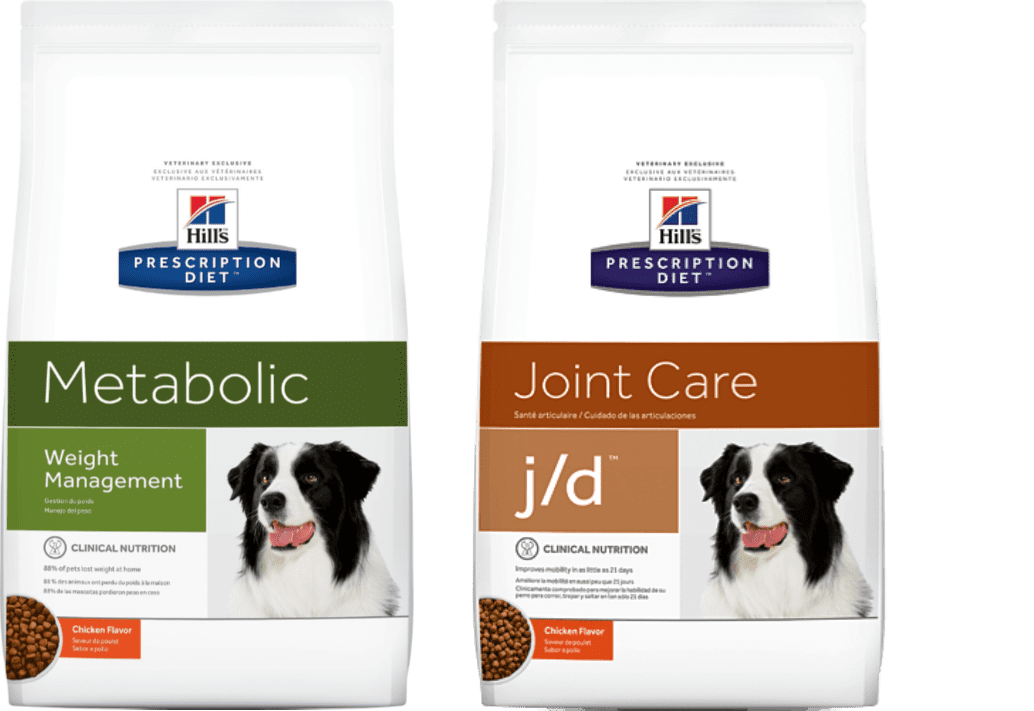Arthritis
All the moving joints of the body are covered with a soft cartilage called hyaline cartilage. The cartilage produces a thick liquid called hyaluronic acid, which serves as lubricant for movement of the joint. As a dog plays and moves on these joints over years, the cartilage begins to wear down until bone can rub on bone. As this occurs, joint fluid production is decreased, thus continuing the degenerative process. Eventually as bone rubs on bone, the area becomes irritated, inflamed and begins to form sharp ridges and edges that cause further pain and inflammation.
Common signs of arthritis are:
- Chronic lameness that progressively gets worse with time.
- Lameness which is made worse with exercise, or long periods of lying down.
- Stiff walk or run, sometimes getting better as the dogs warms up.
- Joint swelling.
- Lameness that responds to anti-inflammatory drugs.
Cause: Arthritis can be prevalent in both dogs and cats. Predisposing factors can be athletic or working dogs, obese animals, or animals with Cushing’s disease (Hyperadrenocortism) and diabetes mellitus. There are two forms of arthritis:
- Primary: This is due to aging and activity as joints break down over time.
- Secondary: underlying condition that makes the joint less stable. For example injury to cartilage through trauma, or improper joint formation.
Diagnosis: Your veterinarian may suggest a number of tests to make sure that there are no other disease conditions causing lameness or muscle pain (e.g. Fracture, OCD, Panosteitis, Epiphysitis, and Infections of the bone…). Your veterinarian may suggest:
- Blood work: There are many disease conditions, (some infectious diseases,) which can cause muscular and joint pain; your veterinarian may suggest complete blood work and chemistry.
- Radiographs: X-rays can help image the joints and see if there are areas that represent roughened irritated bone that may represent arthritic change. X-rays can also aid in imaging fracture, bony infection or areas suggestive of cancer.
- Joint Tap: Your veterinarian may suggest tapping the fluid in the affected joint for analysis.
Treatment: There are several options in the management of arthritis. Arthritic change cannot be “fixed”, but we can manage progression of the disease process.
- Diet: Making sure obese animals lose weight, and keeping other animals fairly lean makes the wear on the joints much less. Our qualified nurses can help set up a weight loss programme for you.
- Prescription Diet® metabolic® Canine/Feline dry food is designed specifically for the management of dogs/cats that are overweight or obese. Its low fat, reduced calorie, high fibre, high lysine formula helps dogs/cats lose weight while helping them feel full.
- Hill’s® Prescription Diet® j/d™ Canine/Feline is an innovative pet food that helps maintain healthy joints and improves mobility in pets. j/d™ Canine/Feline improves the quality of life by helping pets run better, play better, and rise more easily.
- Non-Steroidal Anti-inflammatory Drugs: These are a family of drugs which reduce inflammation in the body. In this category are Rimadyl, Previcox, and Phenylbutazone. They can be extremely effective but can cause gastrointestinal upset and some can affect the kidneys and liver in sensitive animals. These come as injectable, tablet and liquid forms for easy use.
- Chrondroprotective Agents: These drugs help try to increase joint fluid while protecting the cartilage. These drugs have mild to no side effects and can be reasonably effective in controlling inflammation.
- Nutriceuticals: Products like glucosamine and chondroitin have been shown in some studies to be effective in promoting joint function. They work to protect the cartilage.
Please contact us immediately if:
- Your pet begins to vomit, have diarrhoea or stops eating while on medication.
- Your pet’s lameness gets worse.
- Your pet is unable to get up or severely limps on any leg.
- Your pet begins to trip or seems unable to balance their weight.
- If there is any overall change in your pet’s health.


